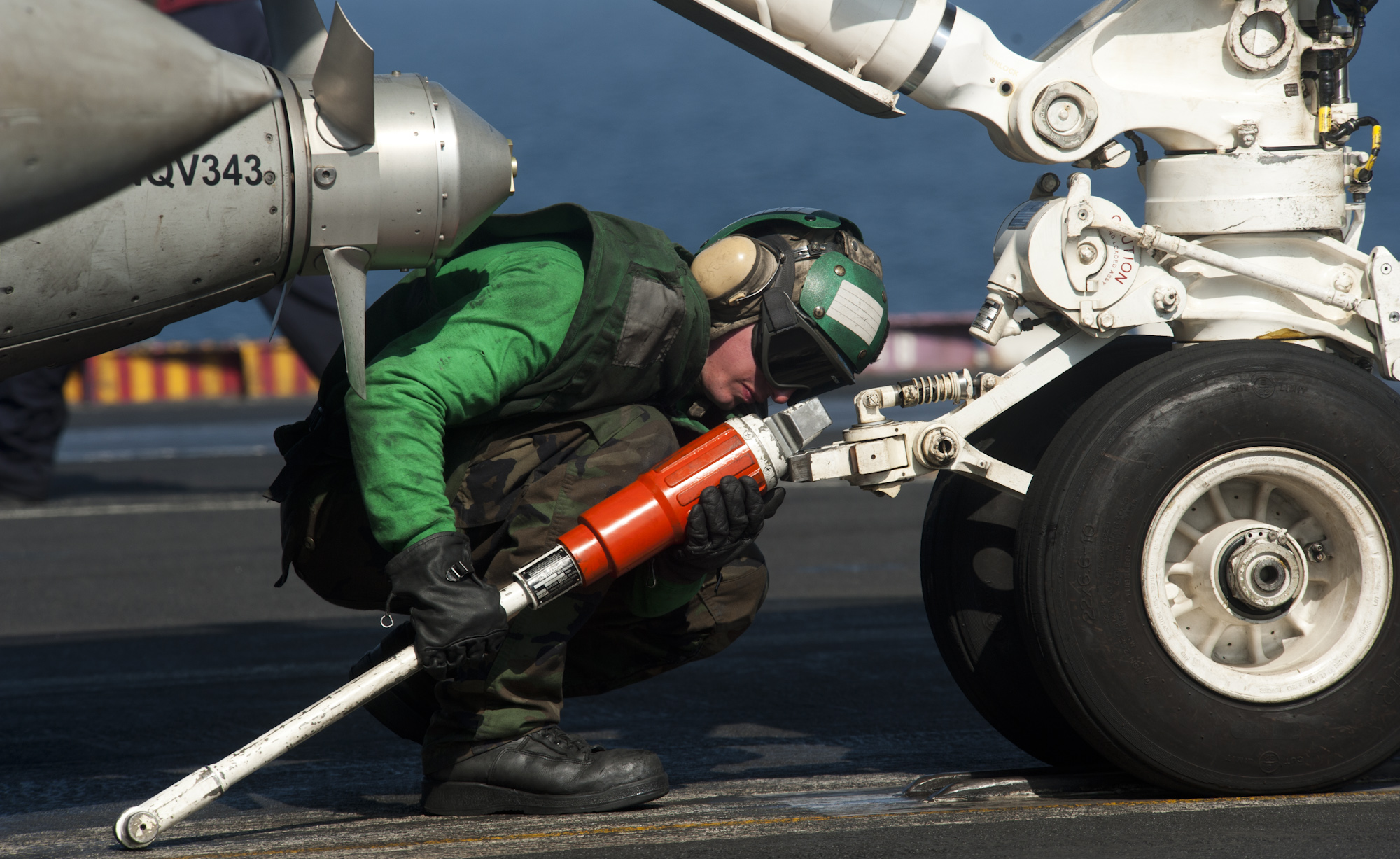by Hedgehog » Fri May 08, 2020 9:24 am

- holdback bar.jpg (824.8 KiB) Viewed 3944 times
I kinda like the video below as it more-or-less focuses on a hugely important aspect of flight deck ops that is sort of dismissed as invisible magic in the sim.
The holdback bar is as important as the catapult itself in getting the plane in the air. It keeps the plane from moving at full throttle, even in afterburner, until the cat stroke. I never really knew how it works, or how it connects to the aircraft, so I decided to do some digging. This video pretty clearly shows how it is connected to the nose gear.
Older holdback bars had a sheerable/expendable pin that was 'calibrated' to break at a certain force, which had to be above full thrust from the aircraft's engines. Of course, it was critical that the flight deck crew used the right holdback bar and pin for your aircraft. After the plane launched, the broken pin is just tossed overboard. As I understand, the whole deal is color-coded.
Newer holdback bars are a complicated hydraulic mechanism that is reset after each use. Again, pretty sure each is calibrated for a specific amount of thrust and color-coded to you can tell at a glance if the right one is on the aircraft. It should be clear that the wrong one would have disastrous results.
When the Super Carrier module is released, placement of the holdback bar will probably still be invisible to us, but part of what the yellow shirt "shooter" has to ensure is done properly before you get his salute.
[attachment=0]holdback bar.jpg[/attachment]
I kinda like the video below as it more-or-less focuses on a hugely important aspect of flight deck ops that is sort of dismissed as invisible magic in the sim.
The holdback bar is as important as the catapult itself in getting the plane in the air. It keeps the plane from moving at full throttle, even in afterburner, until the cat stroke. I never really knew how it works, or how it connects to the aircraft, so I decided to do some digging. This video pretty clearly shows how it is connected to the nose gear.
[youtube]<iframe width="560" height="315" src="https://www.youtube.com/embed/CcLRG-VJ4Lk" frameborder="0" allow="accelerometer; autoplay; encrypted-media; gyroscope; picture-in-picture" allowfullscreen></iframe>[/youtube]
Older holdback bars had a sheerable/expendable pin that was 'calibrated' to break at a certain force, which had to be above full thrust from the aircraft's engines. Of course, it was critical that the flight deck crew used the right holdback bar and pin for your aircraft. After the plane launched, the broken pin is just tossed overboard. As I understand, the whole deal is color-coded.
Newer holdback bars are a complicated hydraulic mechanism that is reset after each use. Again, pretty sure each is calibrated for a specific amount of thrust and color-coded to you can tell at a glance if the right one is on the aircraft. It should be clear that the wrong one would have disastrous results.
When the Super Carrier module is released, placement of the holdback bar will probably still be invisible to us, but part of what the yellow shirt "shooter" has to ensure is done properly before you get his salute.